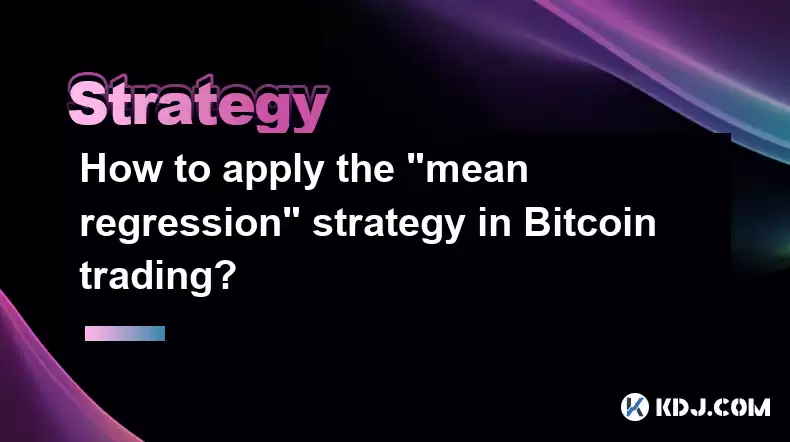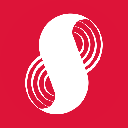-
 Bitcoin
Bitcoin $119000
2.02% -
 Ethereum
Ethereum $4233
-0.58% -
 XRP
XRP $3.182
-1.09% -
 Tether USDt
Tether USDt $1.000
-0.01% -
 BNB
BNB $804.0
0.52% -
 Solana
Solana $183.2
1.27% -
 USDC
USDC $0.9998
0.00% -
 Dogecoin
Dogecoin $0.2335
-2.82% -
 TRON
TRON $0.3384
0.95% -
 Cardano
Cardano $0.8003
-0.61% -
 Hyperliquid
Hyperliquid $45.12
1.98% -
 Chainlink
Chainlink $22.14
3.65% -
 Stellar
Stellar $0.4440
-0.46% -
 Sui
Sui $3.858
-1.36% -
 Bitcoin Cash
Bitcoin Cash $569.6
-0.25% -
 Hedera
Hedera $0.2578
-2.58% -
 Ethena USDe
Ethena USDe $1.001
-0.03% -
 Avalanche
Avalanche $23.76
-3.06% -
 Litecoin
Litecoin $123.7
2.27% -
 Toncoin
Toncoin $3.337
-1.91% -
 UNUS SED LEO
UNUS SED LEO $9.051
0.54% -
 Shiba Inu
Shiba Inu $0.00001355
-1.80% -
 Uniswap
Uniswap $10.90
-0.84% -
 Polkadot
Polkadot $4.047
-1.93% -
 Dai
Dai $1.000
0.00% -
 Cronos
Cronos $0.1628
3.51% -
 Ethena
Ethena $0.7833
5.35% -
 Bitget Token
Bitget Token $4.447
-1.73% -
 Pepe
Pepe $0.00001201
-3.46% -
 Monero
Monero $268.2
-3.37%
How to apply the "mean regression" strategy in Bitcoin trading?
To determine entry and exit points in a mean reversion trading strategy for Bitcoin, traders use technical indicators like Bollinger Bands, Relative Strength Index, and Stochastic Oscillator to identify potential reversals back towards the long-term equilibrium value.
Feb 25, 2025 at 08:01 am

Key Points
- Understanding Mean Regression
- Identifying Mean Reversion Signals
- Determining Entry and Exit Points
- Position Sizing
- Risk Management
Understanding Mean Regression
Mean regression refers to a phenomenon in statistics where a variable that has deviated significantly from its average tends to revert back to the middle over time. This concept applies to financial markets, including Bitcoin, where prices tend to fluctuate around a long-term equilibrium value.
Identifying Mean Reversion Signals
To identify mean reversion signals in Bitcoin, traders typically use technical indicators that measure deviations from the moving average. These indicators include:
- Bollinger Bands: Calculate the upper and lower bands using standard deviations around a moving average. Breakout of the upper or lower bands indicates potential mean reversion opportunities.
- Relative Strength Index (RSI): Measures the magnitude of price fluctuations between oversold (below 30) and overbought (above 70) levels. Extremes in RSI values can indicate potential mean reversion.
- Stochastic Oscillator: Measures the ratio of the difference between the current price and the lowest price within a period to the range of prices within the period. Overbought or oversold levels in the stochastic oscillator can also suggest mean reversion.
Determining Entry and Exit Points
Once a mean reversion signal is identified, traders can determine entry and exit points based on the following principles:
- Entry Points: Enter a long position when the price rebounds off the lower Bollinger Band or RSI/stochastic oscillator crosses above the oversold level. Enter a short position when the price rebounds off the upper Bollinger Band or crosses below the overbought level.
- Exit Points: Exit a long position when the price reaches the upper Bollinger Band or RSI/stochastic oscillator crosses above the overbought level. Exit a short position when the price reaches the lower Bollinger Band or crosses below the oversold level.
Position Sizing
When applying the mean reversion strategy, traders should carefully consider their position sizing. A rule of thumb is to risk no more than 1% of their total trading capital on any single trade. This helps to manage risk and preserve capital in the face of unexpected market movements.
Risk Management
Effective risk management is crucial in any trading strategy, including mean reversion. Traders should:
- Use stop-loss orders to limit potential losses if the market moves against their position.
- Monitor their trades closely and adjust their positions as needed based on market conditions.
- Have a clear trading plan that outlines their risk tolerance, trading goals, and exit strategies.
FAQs
- Is mean reversion a reliable trading strategy? Mean reversion can be an effective strategy in certain market conditions, but it is essential to recognize its limitations. Mean reversion does not always work, and traders should always exercise caution and have a sound risk management plan in place.
- How often should I trade mean reversion signals? The frequency of your mean reversion trades will depend on your trading style and market conditions. Some traders may take only a few trades per week, while others may trade multiple times per day.
- Can I use mean reversion to make quick profits? While mean reversion can provide trading opportunities, it is not a get-rich-quick scheme. Mean reversion profits come from small, consistent gains over time, rather than sudden, large gains.
- What are the risks of using the mean reversion strategy? The primary risks of using the mean reversion strategy include false signals, market volatility, and the possibility of extended periods of sideways market action.
- How can I improve my success rate with mean reversion? To improve your success rate with mean reversion, focus on identifying strong trading setups, managing your risk effectively, and having a disciplined trading plan.
Disclaimer:info@kdj.com
The information provided is not trading advice. kdj.com does not assume any responsibility for any investments made based on the information provided in this article. Cryptocurrencies are highly volatile and it is highly recommended that you invest with caution after thorough research!
If you believe that the content used on this website infringes your copyright, please contact us immediately (info@kdj.com) and we will delete it promptly.
- KiwiSavers, Crypto Returns, and Digital Investment: Are Kiwis Missing Out?
- 2025-08-11 06:30:11
- Ruvi AI's Sales Surge: Could It Outpace Tron in the Crypto Race?
- 2025-08-11 06:30:11
- Meme Coin Mania: Is Shiba Inu Out and Little Pepe In?
- 2025-08-11 06:50:12
- Bitcoin Casino Weekly Challenge: Hitting the Jackpot in Crypto Gaming
- 2025-08-11 06:50:12
- Cardano (ADA): Riding the Bull Cycle Wave to New Heights?
- 2025-08-11 07:10:12
- Bitcoin Institutional Holdings in 2025: A Bullish Outlook
- 2025-08-11 07:15:19
Related knowledge

How to use stop-loss orders to limit potential losses?
Aug 08,2025 at 02:01pm
Understanding Stop-Loss Orders in Cryptocurrency TradingA stop-loss order is a risk management tool used by traders to automatically sell a cryptocurr...

What are the most promising altcoins to invest in?
Aug 10,2025 at 11:42am
Understanding the Role of Private Keys in Cryptocurrency WalletsIn the world of cryptocurrency, private keys are the cornerstone of ownership and cont...

How to read cryptocurrency charts and use technical analysis?
Aug 08,2025 at 11:08am
Understanding the Basics of Cryptocurrency ChartsCryptocurrency charts are graphical representations of price movements over time. These charts are es...

What is the difference between long-term holding (HODLing) and short-term trading?
Aug 10,2025 at 05:30pm
Understanding HODLing in the Cryptocurrency SpaceThe term HODL originated from a typo in a 2013 Bitcoin forum post and has since become a widely accep...

How to do your own research (DYOR) before investing in a crypto project?
Aug 08,2025 at 09:07pm
Understanding the Core Principles of DYOR in CryptocurrencyEngaging in due diligence before investing in any cryptocurrency project is essential to mi...

How to build a diversified crypto portfolio?
Aug 09,2025 at 12:21pm
Understanding the Importance of Diversification in CryptoDiversification in the cryptocurrency space is a strategy used to reduce risk by spreading in...

How to use stop-loss orders to limit potential losses?
Aug 08,2025 at 02:01pm
Understanding Stop-Loss Orders in Cryptocurrency TradingA stop-loss order is a risk management tool used by traders to automatically sell a cryptocurr...

What are the most promising altcoins to invest in?
Aug 10,2025 at 11:42am
Understanding the Role of Private Keys in Cryptocurrency WalletsIn the world of cryptocurrency, private keys are the cornerstone of ownership and cont...

How to read cryptocurrency charts and use technical analysis?
Aug 08,2025 at 11:08am
Understanding the Basics of Cryptocurrency ChartsCryptocurrency charts are graphical representations of price movements over time. These charts are es...

What is the difference between long-term holding (HODLing) and short-term trading?
Aug 10,2025 at 05:30pm
Understanding HODLing in the Cryptocurrency SpaceThe term HODL originated from a typo in a 2013 Bitcoin forum post and has since become a widely accep...

How to do your own research (DYOR) before investing in a crypto project?
Aug 08,2025 at 09:07pm
Understanding the Core Principles of DYOR in CryptocurrencyEngaging in due diligence before investing in any cryptocurrency project is essential to mi...

How to build a diversified crypto portfolio?
Aug 09,2025 at 12:21pm
Understanding the Importance of Diversification in CryptoDiversification in the cryptocurrency space is a strategy used to reduce risk by spreading in...
See all articles

























































































